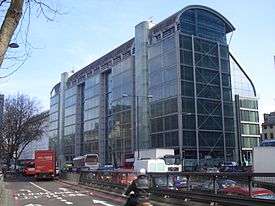Wellcome Trust Centre for Gene Regulation and Expression
The Wellcome Trust Centre for Gene Regulation and Expression, located within the University of Dundee, pioneers new approaches in the field of gene expression and chromosome biology. Previously part of the Dundee Biocentre and receiving significant Wellcome Trust funding from 1995 onwards, it was awarded Wellcome Trust Centre status in 2008. Professor Angus Lamond is the Centre’s Director.
The Centre aims to enhance our understanding of how genes are regulated at both the single cell and whole organism level. Researchers use a wide range of advanced techniques, including live cell fluorescent imaging and mass spectrometry-based proteomics, to explore the functions of key proteins and molecular mechanisms in cell biology.
Research and discoveries
Live cell imaging and proteomic studies have allowed researchers at the Centre to gain fresh understanding of protein function and cell behaviour.
The Centre is studying many aspects of the cell cycle, including the way in which chromosomes replicate and separate during cell division and how DNA damage is detected. Failure of these events can lead to major faults within a genome, potentially leading to the rise of cancerous cells. The Centre is also investigating how DNA is tightly wound and compacted so that it can fit into the nuclei of eukaryotic cells, as well as the protein-DNA complexes that are involved in this packaging. The controlled unravelling of DNA is an important step in the regulation of gene function.
Researchers
Researchers at the Centre include:
Professor Angus Lamond a Wellcome Principal Research Fellow, studies the composition and function of organelles and multiprotein complexes[1] found within the nucleus. This work is helping to explain how a cell’s nucleus is organised,[2] an area that has particular importance to human diseases such as inherited genetic conditions which can have modified or disrupted organelles.
Professor Tom Owen-Hughes is a Wellcome Trust Senior Research Fellow. He works on the packing of DNA in the nuclei of eukaryotic cells. This DNA is wound around proteins to form a structure known as chromatin. His group are interested in the mechanisms which remodel and alter chromatin structure.
Professor Jason Swedlow is a Wellcome Trust Senior Research Fellow and investigates how chromosomes are separated during cell division.[3] The driving force behind this process are strands known as microtubules, which pull the chromosomes apart. His work looks at specialised structures known as kinetochores and the mechanisms which monitor the correct attachment of microtubules to the chromosomes.
Professor Tomo Tanaka studies the processes by which eukaryotic cells maintain their genetic integrity. His group use budding yeast to study chromosome duplication and segregation.[4] By understanding the processes that occur during cell division, it is hoped that a better knowledge will be gained of human diseases such as cancer which are often characterised by chromosome instability.
Dr Anton Gartner is a Wellcome Trust Senior Research Fellow and works on the model nematode Caenorhabditis elegans studying the signals which alert a cell to DNA damage. These signals can lead to DNA repair, the prevention of cell division, or programmed cell death. Problems with this system can have a large impact on genome stability, and can lead to the formation of tumours or other genetic diseases.
Dr Eric Griffis is a Wellcome Trust Research Career Development Fellow and is interested in the way in which cells control tiny motor proteins called myosin. Large amounts of these are found in muscle cells, and help muscles contract. In non-muscle cells, however, these motors perform a variety of other functions, such as cell motility.
Dr Joost Zomerdijk and his group work on the coordinated manner in which genes are expressed - essential for correct cell development. Dr Zomerdijk’s work investigates the genes that control the production of ribosomes – structures that manufacture proteins from amino acids.
See also
- Wellcome Trust
- Wellcome Trust Centre for Neuroimaging
- Wellcome Trust Centre for Stem Cell Research
- Wellcome Trust Centre for Cell-Matrix Research
References
- ↑ Ten Have, Sara; Boulon, Séverine; Ahmad, Yasmeen; Lamond, Angus I. (2011). "Mass spectrometry-based immuno-precipitation proteomics - the user's guide". Proteomics. 11 (6): 1153–9. doi:10.1002/pmic.201000548. PMID 21365760.
- ↑ Boulon, Séverine; Westman, Belinda J.; Hutten, Saskia; Boisvert, François-Michel; Lamond, Angus I. (2010). "The Nucleolus under Stress". Molecular Cell. 40 (2): 216–27. doi:10.1016/j.molcel.2010.09.024. PMC 2987465
 . PMID 20965417.
. PMID 20965417. - ↑ Moser, Sandra C.; Swedlow, Jason R. (2011). "How to be a mitotic chromosome". Chromosome Research. 19 (3): 307–19. doi:10.1007/s10577-011-9198-3. PMC 3078314
 . PMID 21461697.
. PMID 21461697. - ↑ Tanaka, Tomoyuki U (2010). "Kinetochore–microtubule interactions: Steps towards bi-orientation". The EMBO Journal. 29 (24): 4070–82. doi:10.1038/emboj.2010.294. PMC 3018795
 . PMID 21102558.
. PMID 21102558.

